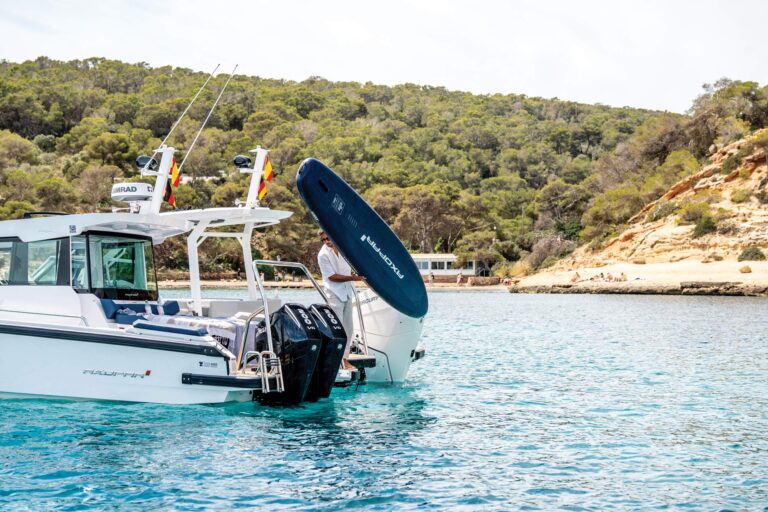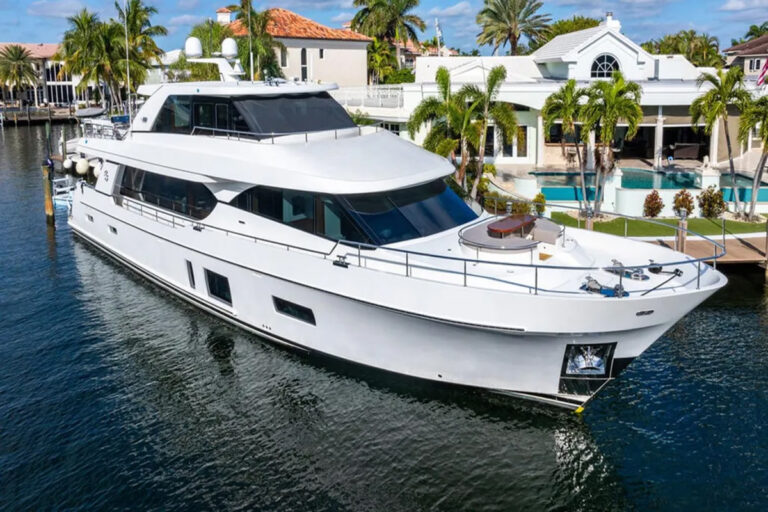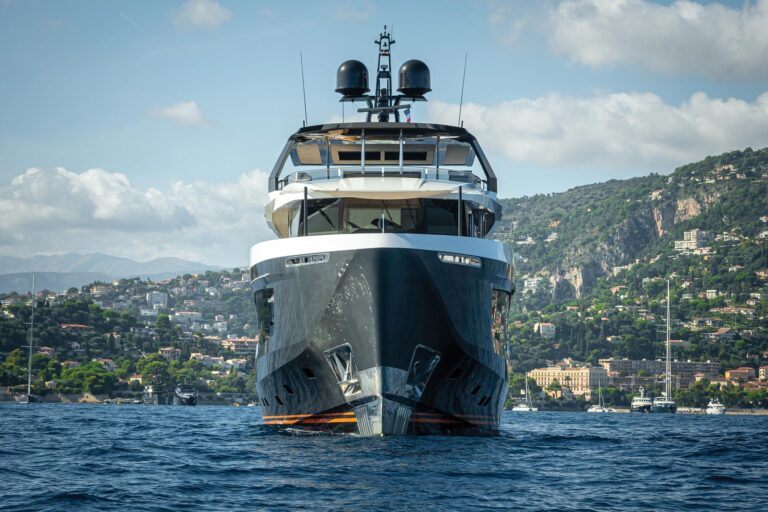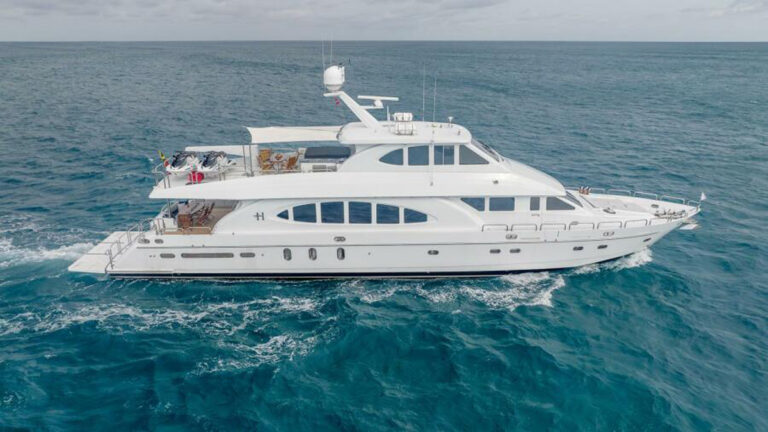
ytgoct1enewscur2525.jpg
Today, the word tender has come to refer to anything from a small hard dinghy or rigid-hull inflatable to a snappy, inboard runabout or outboard-powered center console, depending on the yacht it serves. Regardless of size and type, that small boat gives you freedom. Wise yacht owners choose their tender carefully, and make sure it is looked after. Many boat owners opt for rigid-hull inflatables because they’re light, stable, and seaworthy, can carry a lot of weight for their size, and are easy on the yacht’s topsides in close quarters. But the dinghy and its equipment are subjected to the same harsh elements as the rest of the yacht, and therefore must be carefully maintained. With inflatables, you can save the topsides paint and varnish, but the inflatable part is not just a reshaped, repurposed truck-tire inner tube. That material-called hypalon-is a proven performer, but it needs its own special care. For the tubes, a regular washing with a mild, biodegradable liquid detergent and warm water will prevent the buildup of dirt and salt. While occasional waxing of the gelcoat hull is recommended, wax should never be used on the tubes as it interferes with the bonding necessary to make repairs. “With punctures, it’s the same as fixing a tire on your bicycle,” said Howard Rogers of Nautica, a manufacturer of tenders based in Ft. Lauderdale. “We also have long-range service kits available which include spare engine parts for long-term cruisers.” Every tender Nautica sells comes with a service kit and instructions. Inspect tube valves regularly for sand and salt and keep them clear, otherwise the valve may not seat properly and result in a drop in tube pressure. To check for leaks, pour soapy water over the valve and watch for bubbles. This can be done on the tube seams as well, to track down suspected leaks. If you need to lay your tender up in warm climes, cover it with a vented white fabric to allow air circulation-Rogers suggests Sunbrella products. It should not be shrinkwrapped as this will encourage mildew growth and result in fabric stains, some of which may be difficult or impossible to get out. And even with the vented cover, you should examine and clean the tubes, cushions, and rubrails if any signs of growth appear. For seasonal boaters in cold climate, it’s preferable to store your inflatable tender indoors. If that’s not an option, then it should be shrinkwrapped.
If you haven’t gone green by using oars or an electric motor on your tender, you probably have either an outboard or a jet-drive boat. While we recommend following your engine manufacturer’s maintenance regimen, we’ve found that tenders need special care because of their sometimes-sporadic usage schedules. Here are a few helpful tips to make sure getting started will rarely be a problem. The bigger, more sophisticated direct-injected two- and four-stroke engines are, for the most part, difficult for an owner to maintain properly. Keep them serviced by a manufacturer-approved dealer. But no matter what size outboard engine you have, it must be kept clean. And that means daily freshwater washdowns if the tender is brought aboard and stowed. If you leave it in the water, tilt the drive up and wipe down the cowling and all exposed parts. With saltwater operation, most engine manufacturers suggest you flush out the cooling system after each use. If circumstances do not allow this, make sure to do it as often as possible. This simple procedure is performed out of the water by hooking up the familiar “earmuff” devices or by direct hose input should your engine have one. Run the fresh water through the cooling system for about ten minutes at idle to ensure any salt deposits, sand, and debris are cleared. As with any outboard, you should always look for the telltale stream of cooling water. If the output of water is not as it should be, there may be a blockage. Snake a length of wire up the hose to help free things up. If this doesn’t work, it is most likely the water pump impeller. As far as impeller maintenance, the “if it ain’t broke don’t fix it” adage works best. Even with heavy use, impellers usually have a two-year life before any problems arise. Keep in mind that some tenders often stir up sandy bottoms in far-flung anchorages-which can have an adverse effect. No matter what the horsepower, your outboard needs to have the correct oil. If you’re running a two stroke, look for the TC-W3 tag on the container. Four-strokes have a FC-W designation. Make sure you do regular oil changes as per your engine manual. On smaller engines, and those with external gasoline tanks where mixing oil and gasoline is necessary, always do so in the proper ratio. For example, with Yamaha two-stroke outboards of 25 horsepower or less, a 100:1 pre-mix is required. The company offers its Ratio-Rite cup to ensure this critical proportion is precisely measured. Fouled, burnt, or eroded spark plugs will cause starting problems. With proper engine maintenance, getting 100 hours out of a spark plug is possible. It’s easy to remove a plug using a deep spark-plug socket. Gap them per manufacturers’ specs. Some identifying electrode-end conditions include eroded or whitish deposits (indicative of overheating), water-wet, or very clean, means there is water in the cylinder, and a heavy carbon deposit points to using the wrong oil or too much oil in the gasoline. If there is any doubt as to the condition of your plugs, swap them out for new ones. Spare plugs are inexpensive insurance-keep a few on hand. While keeping up with regular maintenance on jet-drive engines, including oil and filter changes, Bruce Woodfin, northeast distributor for Hamilton Jet, recommends a yearly application of Tri-Lux 33 anti-fouling paint to the jet, including up inside the intake. “The most important thing you should do is rinse out the jet with fresh water after you haul the tender,” said Woodfin. A puddle of salt water can form inside the tailpipe and impeller race area and cause problems.
Another critical area of jet-drive maintenance includes checking the external and internal zinc anodes. “We suggest changing them when necessary,” says Woodfin. “Once a year is usual but with a tender that spends a lot of time on deck, two years use is not uncommon.” If you’re a steadfast gunkholer, your tender is an important part of your boat’s equipment. From exploring skinny waters, taking the kids out for a bit of fun, drifting a fishing line, or simply dinking around an interesting harbor for a while after getting the big boat squared away, having a well-maintained tender at the ready will make your boating experience all the more enjoyable.









